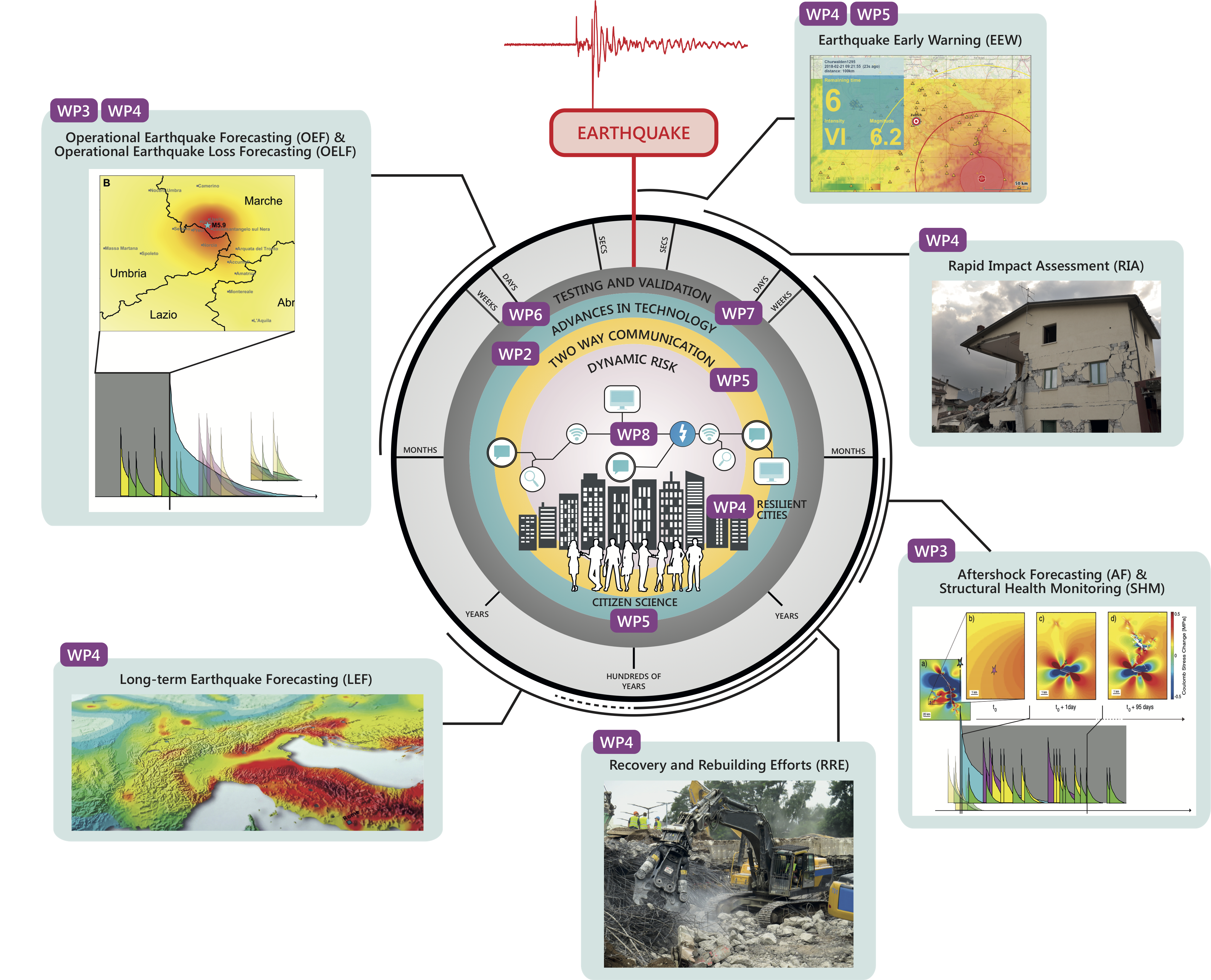Seismic risk is not a constant. It varies in time, location, and context. For example, a recent earthquake of a certain magnitude increases for a specific period the chances for another big event to follow. In addition, the vulnerability of structures, soil conditions, and individual behaviour define the consequences of an event. Dynamic risk describes the interplay of these aspects.
RISE studies seismic risk, its changes, importance, and evolution at all stages of the risk management process. The project will depict current potentials and limits as well as advance the state of the art to reduce seismic risk in Europe and beyond. To this aim, RISE strengthens interdisciplinary collaboration, fills current knowledge gaps, and tests promising approaches and technologies. The project will make use of improved modelling capacities, a close exchange with stakeholders, big data, and applies emerging technologies to tackle dynamic risk.
In the following, we present the most relevant concepts within the RISE project to handle dynamic risk.
